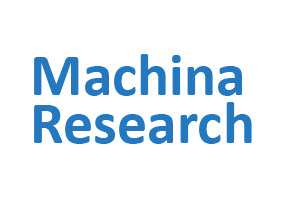During Machina Research’s regular discussions with enterprise end customers implementing Internet of Things (IoT), a frequent problem, and a critical one for many companies, is the uncertainty over how to deploy cellular connectivity for the next 10 years. Specifically the challenge is that for deployments that expect to be around during the early 2020s it is unclear which generations of mobile technologies should be deployed.
Currently around the world most operators are running a combination of 2G, 3G and increasingly 4G networks. Usually this is the 3GPP family of technologies with 2G consisting of GPRS and EDGE, 3G of WCDMA and HSPA, and 4G of LTE. The 3GPP2 family is less common and revolves around CDMA, and is mostly limited to the US and Canada. Until very recently operators have been content to add new technologies, but recently some have started to sunset their older technologies. In Japan and Korea this is already completed for 2G and Australia, Canada, Singapore and the US are in various states of evolution with regard to turning off older generations of technologies. The motivation for doing so is simple: higher generation technologies offer more bang-for-your-buck in terms of squeezing more data transmission out of the same amount of spectrum. Furthermore, rationalising the number of technologies also brings a saving in terms of the network equipment that needs to be supported.

This poses a problem for anyone implementing IoT which is dependent on cellular connectivity: which technologies should you use? The answer is not necessarily a simple one. Consideration must be given to the anticipated lifespan of different technologies, potentially across many different countries. The possibility that some IoT devices may be left stranded, with no available network, is a very real one. There is a simple solution: embed all the available generations into your device. However, for many implementations, the additional bill of materials cost would be substantial, and one that most would want to avoid. Therefore, any company looking at deploying cellular-based IoT over the next few years will need to understand which technologies are going to be available in which countries.
Machina Research will shortly publish its Strategy Report “2G and 3G switch-off: a navigation guide for IoT” which examines lessons from countries where switch-off has already occurred, the main drivers for doing so, and the key potential barriers. In this article we focus on the regulatory barriers. The report also looks at the technical and commercial impediments. Regulatory issues associated with technology refarming, as well as licensing, numbering, roaming, data management and numerous other regulations are covered in depth in the Machina Research ‘M2M & IoT Regulation’ Research Stream, which provides country-by-country guidance on regulatory issues related to the Internet of Things.

The key region to consider when discussing regulation is Europe. The subject of 2G and 3G switch off is high on the agenda of operators in more developed markets but in North America, Australia, Japan, Korea and Singapore, the decision is already largely made. Operators in those markets have already made the move (or are about to) to turn off some of their existing networks, with regulatory issues resolved. In the likes of Latin America and Africa consideration of this topic is still a few years away. Operators in the EU have yet to make any significant moves on switch-off, with only Telenor Norway having even made any statements about plans (3G switch off in 2020, 2G in 2025) let alone done anything. There has been some refarming, e.g. of 900MHz spectrum to 3G, but not complete switch off of any technology.
Having analysed the regulatory regimes in major markets across Europe we find that there are almost no barriers to the switching off of 2G and 3G networks based on the technology itself. The only significant obligation seem to be on ensuring that there is coverage and, in some cases, that the coverage provides a minimum data rate. Regulators in the EU have almost universally moved away from setting requirements for technology support in favour of requirements for outcomes. As a result operators are mostly free to switch off 2G at will, based on the regulatory requirements. The decision on timescales therefore comes down to commercial necessity and technical capability. In the report we examine all of these various elements to provide a view on when companies deploying IoT can expect to have access to 2G and 3G networks. The report will be published in late October providing our views on likely operator and country timetables.
The authors of this blog are Emma Buckland, principal analyst and Matt Hatton, founder & CEO, Machina Research










